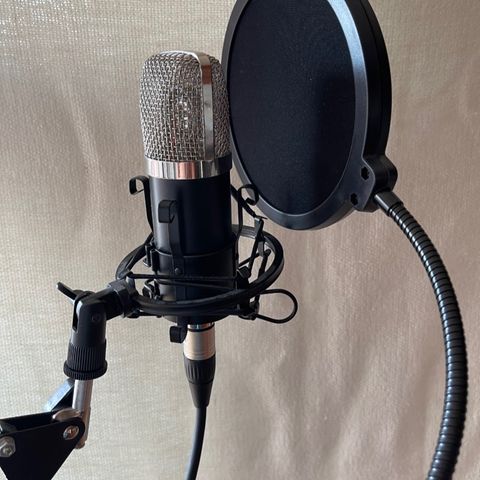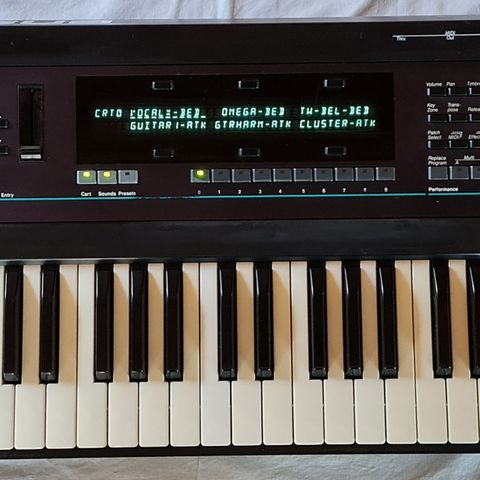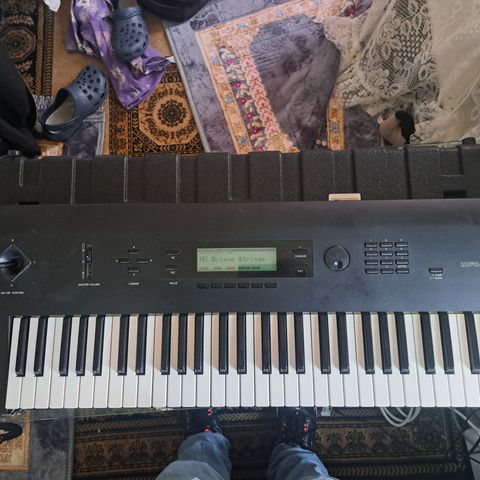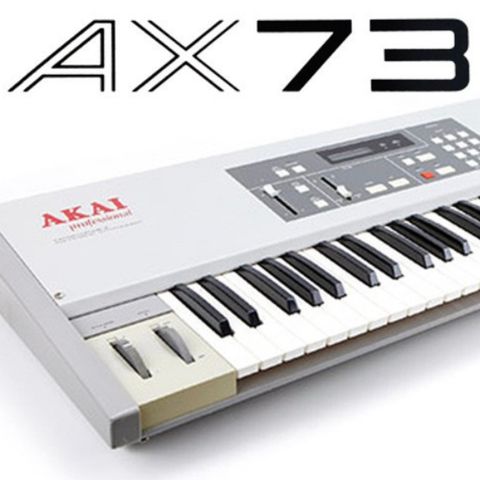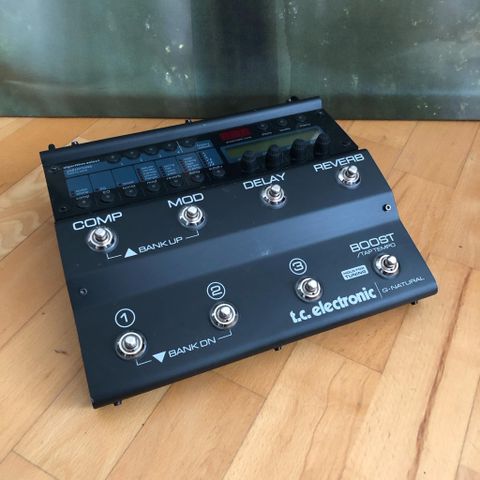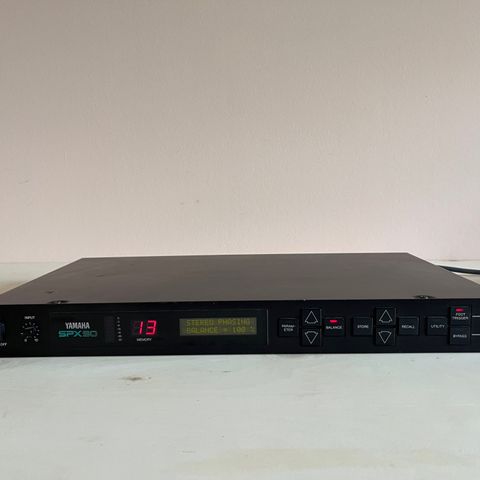Bildegalleri
Technics SX WSA-1 legendarisk acoustic modelling synth
Beskrivelse av varen
Tilstand: Pent brukt - I god stand
Technics legendariske acoustic modelling synth!
Sjelden, produsert bare rundt 600 av disse world wide.
Meget god tilstand, bortsett fra at PLAY/STOP-knappen på sequenceren ikke funker. Formodentlig bare en kontaktfeil som kan fikses lett med noe spray bare. Eller noe med settings.
Totally skrammeløs på fremsiden, på baksiden et par-tre overfladiske merker. Kosmetisk gjør den således et godt inntrykk, ser omtrent ut som ny.
https://www.vintagesynth.com/technics/SX-WSA1
https://www.soundonsound.com/reviews/technics-sx-wsa1
https://reverb.com/item/39414320-technics-sx-wsa-1-acoustic-modeling-synthesizer-1995-black-grey
In a nutshell, physical modelling attempts to produce a mathematical model for a complete musical instrument. It then uses this model to produce sounds which emulate the behaviour of the real thing — often with astonishing realism. But the depth of detail required is formidable — you need to know a huge amount about the physics of the musical instrument, acoustics, and mathematics, and then convert this into software and electronics.
In contrast, acoustic modelling takes a step back, and looks at physical modelling in a different way. Instead of trying to work out how a complete instrument works, is there any way that the important elements can be encapsulated in a form which provides control, but is easy to manage? It turns out that there is — and it stems from research into speech. When you speak, your vocal chords are vibrated by the air which rushes past them, and this raw sound is then modified by the complex set of tubes and spaces formed by your throat, nose, mouth, teeth, lips and tongue. A physical model of this would need to consider the velocity of the air, the pressure, the tension in the vocal chords, the space between them, their elasticity, and so on — and trying to work out exactly the mechanisms for how they vibrate could take a long time. A more pragmatic approach would be to ask what the raw sound produced by the vocal chords sounds like, and what sort of filter the throat, mouth and nose form.
Acoustic modelling does just this. It assumes that musical instruments can be split into three parts:
Drivers, which produce the raw sound. Examples are the hammer hitting a piano string, or the plectrum plucking a guitar string, or the reed vibrating in an oboe.
Resonators, which colour the sound from the driver. Most musical instruments exhibit some sort of resonance: often the whole of the instrument vibrates along with the sound to some extent, and the way that it vibrates affects which frequencies are emphasised and which are suppressed.
Modifiers, which shape the coloured sound. Filters and Envelopes are familiar examples.
In a real instrument, the drivers and resonators are very closely connected, and interact with each other: the hammer hitting a piano string causes the string to vibrate, but the vibration of the string is affected by the fact that the hammer is touching the string, has probably stretched the string slightly when it moved the string, and has added in a low frequency thump. The act of setting the string vibrating depends on the hammer — you can't have the sound without it, but the hammer affects the sound. The two are inextricably interconnected. In acoustic modelling, the two elements have been separated but the same interactions can be produced by controlling the way that the driver and resonator are connected together — and Technics call this the 'connection'.
With the WSA1, you get over 300 drivers and lots of resonators (you can couple together up to four of the 64 resonators to form even more complex resonators), and you get lots of control over how the driver and resonator interact. The connection/interaction part is quite interesting, because it really is very 'physical modelling' in its approach. Let's use the analogy of a bowed string. You can control whereabouts on the string you put the bow (Position), how hard you press on the string with the bow (Depth), and how the bow and string interact (which Technics call 'Fitting'). There's also control over how the position changes, and how the resonance changes (whether it is fixed or not). Only the drivers are fixed — you can alter all the parameters for the connection and the resonator.
If you listen to the raw drivers without any resonator, they sound very bright and the initial transient is highly emphasised, almost like high‑pass filtering. But since most resonators act as band‑pass or low‑pass filters, connecting this driver to a resonator turns it into a more normal sound, except that by changing the resonator you can change the timbre. The WSA1 offers all manner of resonators — some which behave like strings, some like tubes and cones, others like flared tubes, drums, and even customised resonators.
64‑note polyphonic.
32‑part multitimbral.
32 MIDI channels.
61‑note keyboard, Velocity & Mono Pressure sensitive.
2 Modulation Wheels.
2 Real‑time Controllers
256 Preset ROM sounds.
16 Preset Drum Kits.
128 Preset ROM Combinations (Combis).
256 User sound memories.
4 User Drum memories.
128 User Combinations
3 MIDI Program Change remappings.
General MIDI Program Change map.
12 Digital Effects, 44 DSP Effects,12 Reverbs.
16‑track Sequencer: 47,000 event capacity, 96 ppqn resolution, 10 Songs (chainable).
Built‑in DD/HD 3.5‑inch disk drive.
https://www.soundonsound.com/reviews/technics-sx-wsa1
Sjekk denne videoen...fra 17 minutter ut blir den virkelig fascinerende...
https://www.youtube.com/watch?v=fCPeUHARUII&t=741s
En annen kul video:
https://www.youtube.com/watch?v=LY7sZDd_4WM
AWESOME!
https://www.youtube.com/watch?v=uzCaqFb4WhQ&t=118s
Ser en rackversjon til 21000 på reverb.com og en til 19000 på ebay 10 april 2024.
Og en keyboardversjon til 14000 på reverb.com
Brukerprofil

Du må være logget inn for å se brukerprofiler og sende meldinger.
Logg innAnnonsens metadata
Sist endret: 5.12.2024 kl. 11:52 ・ FINN-kode: 242349001







